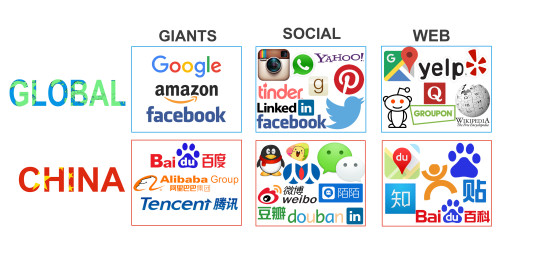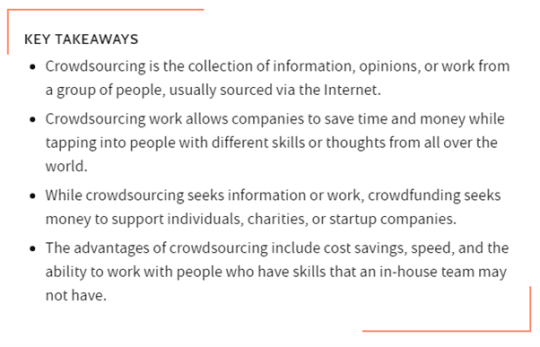Text
Global social media: China

Behind the great wall of china
The those's Republic of China's government uses a mix of tools, services, and regulations to restrict specific internet information from being viewed by those inside China's borders. This combination is known in the west as the "Great Firewall of China." The Great Firewall was deployed in China as early as 1996, under the direction of the Chinese Ministry of Public Security, at which time the initiative was called The Golden Shield Project. In 2013, administration of the Great Firewall shifted to the Cyberspace Administration of China. (Kerner, 2023) The objective of the Great Firewall is to protect Chinese citizens from specific information deemed contrary to the best interests of the People's Republic of China and its people by blocking entire websites and filtering content on partially restricted sites.
China extensive surveillance network
China is the nation with the most surveillance cameras in the world because to its vast surveillance network. China installed an estimated 349 million security cameras in 2018, and by 2020, it hopes to have 626 million deployed, according to a survey by IHS Markit. This indicates that in China, there is approximately one camera for every 2.4 persons. (Kentfaith, 2023) The Chinese government has been investing heavily in surveillance technology, including facial recognition and artificial intelligence, to monitor its citizens. The government claims that this is necessary for maintaining public safety and preventing crime, but critics argue that it is a violation of privacy and human rights.
In recent years, there has been growing concern about the use of surveillance technology in China, particularly in the Xinjiang region where the government has been accused of using it to monitor and control the Uighur Muslim minority. The Chinese government has also been criticized for using surveillance to suppress dissent and political opposition.
Despite these concerns, the Chinese government shows no signs of slowing down its surveillance efforts. In fact, it has been exporting its surveillance technology to other countries, including some with poor human rights records. This has raised alarm bells among privacy advocates and human rights groups, who fear that China's surveillance network could be used to suppress dissent and violate human rights on a global scale.
Activism in China
Chinese activists say they fear intensified state surveillance after a draft law seeking to legitimise monitoring of suspects and raid premises was announced last week, the latest step to strengthen Beijing's security apparatus.
Half a dozen activists contacted by Reuters say they already face extensive surveillance by security agents and cameras outside their homes. Messages they post on social media, including instant messaging applications like WeChat are monitored and censored, they said. (Shepherd, 2017)
On May 16, the draught of a new law that will formally support and potentially broaden China's domestic and international intelligence collecting efforts was made public.
The statute, however, lacked specifics regarding the powers being provided to different state entities and was written in an ambiguous manner.
"State intelligence work should…provide support to guard against and dispel state security threats (and) protect major national interests," added the paper.
The law will give authorities new legal grounds to monitor and investigate foreign and domestic individuals and bodies in order to protect national security, it said.
Public consultation for the draft ends on June 4. It is unclear when the final version may be passed.
Hu Jia, a well-known dissident, said the release was met with fear and despair in his circle of reform-minded activists, where it was seen as a sign of strengthening resolve in the ruling Communist Party to crush dissent.
Consequences follow china steps
Mass surveillance involves the acquisition, processing, generation, analysis, use, retention or storage of information about large numbers of people, without any regard to whether they are suspected of wrongdoing. Legally speaking, mass monitoring is problematic because it is neither technically required nor appropriate in a democracy. Frequently, there are less intrusive options. We also wonder if a democratic society can endure constant surveillance, especially in the absence of any.
Imagine a society in which you are rated by the government on your trustworthiness. Your “citizen score” follows you wherever you go. A high score allows you access to faster internet service or a fast-tracked visa to Europe. If you make political posts online without a permit, or question or contradict the government’s official narrative on current events, however, your score decreases.
To calculate the score, private companies working with your government constantly trawl through vast amounts of your social media and online shopping data. (Mitchell, 2018)

China restrictions on entertaiment
Even when their kids hurled fits, many parents applauded the limitations. To safeguard children, social media and gaming businesses have either enhanced or implemented "youth mode" settings on their applications. They have functions to regulate payments, set usage limits, and provide content that is suitable for the user's age. Real-name registration and even facial recognition gateways have been incorporated for some well-known games in order to stop workarounds.
The Game Industry Group Committee, a government-affiliated industry group, released a report more than a year after the stricter game controls were implemented, declaring that the problem of gaming addiction among minors was “basically resolved,” even though the three-hour weekly limit for Friday, Saturday, and Sunday remained in effect.According to the Game Industry Group research, the majority of parents reported satisfaction with the new limits, and over 75% of minors in China played online games for fewer than three hours each week. (Soo, 2023)

In conclusion, protests in China and around the world have often demonstrated the significant role of digital technology in shaping and mobilizing communities. The use of social media platforms, messaging apps, and other online tools has facilitated the rapid spread of information, organization, and coordination among like-minded individuals. Digital spaces have become vital for expressing dissent, sharing narratives, and building solidarity on a local and even global scale. Additionally, governments, including the Chinese government, may employ digital control measures to monitor and manage dissent, illustrating the complex interplay between technology, activism, and state control.
REFERENCES
Anna Mitchell, L. D. (2018, February 5). China’s surveillance state should scare everyone. The Atlantic. https://www.theatlantic.com/international/archive/2018/02/china-surveillance/552203/
Campbell, C. (2019, November 21). What China’s surveillance means for the rest of the world. Time. https://time.com/5735411/china-surveillance-privacy-issues/
Shelley, L. (2023, October 19). China’s six largest social media platforms – and how to engage its users: Analysis. Campaign Asia. https://www.campaignasia.com/article/chinas-six-largest-social-media-platforms-and-how-to-engage-its-users/492217#:~:text=China%20is%20the%20largest%20social,the%20rest%20of%20the%20world.
Shepherd, C. (2017, June 5). China activists fear increased surveillance with new security law. Reuters. https://www.reuters.com/article/us-china-security-int-idUSKBN18M09U/
Soo, Z. (2023, January 20). China keeping 1 hour daily limit on kids’ online games. AP News. https://apnews.com/article/gaming-business-children-00db669defcc8e0ca1fc2dc54120a0b8
1 note
·
View note
Text
Social Gaming

What is social gaming?
The term "social gaming" refers to online video games accessed mainly through social media platforms. In addition to being entertained while playing, users share the gaming experience with their network on the platform they’re on. By integrating into commonly used platforms, these types of games can attract audiences that aren’t typically interested in video games. (Bernachi, 2022)
Facebook, with its Candy Crush and Farmville games, has been a leader in this industry.
Using video games accessed through social media platforms to advertise goods, services, and brands is known as social gaming marketing. So, rather than making a direct impact on the user, the brand can open the door to a conversation with its target audience.
The development of new technologies and minimal investment requirements will drive the exponential growth of the social gaming sector in the upcoming years, predicts consultancy firm NewZoo.
Since millions of people can access these games on any device with an Internet connection, social gaming marketing presents a great way for brands to reach a wider audience.
Benefits of social gaming
Reach and segmentation
Brand awareness
Interaction
Possibility of monetization
Loyalty
Social game marketing presents new avenues for brand expansion. Since social games have a large audience, many businesses may find them to be a suitable medium. They also give marketers the opportunity to use highly accurate segmentation because they are present on social media platforms. Social gaming allows you to approach consumers at the exact moment when they are most open to receiving value in the form of amusement. As a result, the brand is more enduring and connected to favourable feelings. Video games are by their very nature interactive. Consumers interact with the brand directly, which improves the overall experience. These kinds of games also promote interaction and increase the likelihood of getting viral. (Bernachi, 2022) The developers of social games provide for a variety of revenue streams, including pay-to-play models and in-game purchases of specific objects or features. The virtual and real worlds can be combined thanks to social gaming marketing. While playing, users can experience bodily benefits. With the help of this feature, you may develop a loyalty marketing plan that encourages enduring client involvement.

Monetization in gaming industry
Monetization in the gaming industry encompasses a diverse range of strategies aimed at generating revenue from digital entertainment experiences. Traditional models, such as upfront purchases and digital sales, have evolved alongside the rise of free-to-play (F2P) games, where developers leverage microtransactions to monetize virtual goods and enhance player experiences. Subscription models and freemium approaches offer players access to games or additional content for a recurring fee or by combining free access with premium upgrades. Advertising has become a prevalent avenue, with in-game ads and partnerships contributing to revenue streams. Downloadable content (DLCs), season passes, and loot boxes further extend the lifespan of games and provide opportunities for additional purchases. Esports and competitive gaming bring forth revenue through tournaments, sponsorships, and advertising during live broadcasts. The introduction of virtual currencies enables players to make in-game purchases, while strategic collaborations and partnerships also contribute to the monetization landscape. (Markopoulos, 2018) The character of gaming is reflected in the industry's constant innovation and adaptation in monetization techniques, which aim to strike a balance between delivering captivating experiences to a worldwide player base and maintaining a stable financial position.
Monetization effect to the gaming community
As a monetization strategy gains traction, an increasing number of businesses look to adopt it and look for trends that will maximise their returns. Although there are many different ways to apply micro-transactions as a mechanism, not all of them are successful. Certain micro-transaction practises may be deemed as detrimental to the company, but other practises gain traction and eventually become the norm. One prominent trend in microtransactions is the loot box. Because of their experiences receiving gifts for Christmas and birthdays, individuals find it so normal to imagine opening a gorgeous box and discovering unique and interesting stuff. (Markopoulos, 2018) Concerns about the potential influence of monetization on game design decisions and the risk of player backlash further highlight the delicate balance required to ensure that financial objectives align with the interests and satisfaction of the gaming community. Ultimately, the impact of monetization on gaming communities necessitates a careful consideration of ethical practices, transparency, and maintaining a harmonious relationship between revenue generation and the core gaming experience.

In conclusion, the emergence of gaming industry monetization has given rise to both favourable and unfavourable aspects inside gaming communities. In addition to giving a variety of revenue streams and vital support for long-term game development, monetization approaches have certain hazards, such as the possibility of pay-to-win situations, rifts in the community, and worries about how they may affect game design. Achieving a delicate equilibrium between financial goals and player contentment is crucial. Ethical monetization strategies, open communication, and a dedication to preserving the core of fun and welcoming gaming experiences are the keys to successful gaming communities overcoming these obstacles. To guarantee the long-term health and vibrancy of gaming communities around the world, it will be crucial to establish this equilibrium as the gaming industry continues to change.
REFERENCE
Admin. (2023, September 18). How to monetize your gaming community: VyHub blog. VyHub. https://vyhub.net/blog/how-to-monetize-your-gaming-community/
Bernachi, M. (2022, November 1). Social gaming: What it is, benefits, and examples of platforms. Cyberclick. https://www.cyberclick.net/numericalblogen/social-gaming-what-it-is-benefits-and-examples-of-platforms
Grguric, M. (2023, October 18). Monetization tips for maximizing game revenue - udonis. Udonis Mobile Marketing Agency. https://www.blog.udonis.co/mobile-marketing/mobile-games/monetization-tips
Markopoulos, P. (2018, January 17). (PDF) the effect of monetization in the gaming industry. BA (honours ... https://www.researchgate.net/publication/340983180_The_effect_of_monetization_in_the_gaming_industry_BA_Honours_in_Games_THESIS_Panagiotis_Markopoulos

1 note
·
View note
Text
Crowdsourcing: not a new concept

what is crowdsourcing?
By using the Internet, social media, and smartphone apps, a huge number of individuals can contribute their work, information, or opinions through a process known as crowdsourcing.
While some crowdsourcing participants carry out menial jobs willingly, others work as paid freelancers. For instance, in order to give app users access to up-to-date, real-time information, traffic applications such as Waze incentivize drivers to self-report accidents and other traffic occurrences. (Hargrave, 2022) Crowdsourcing is a collaborative approach that involves sourcing information, ideas, or services from a wide and diverse group of individuals, known as the "crowd." This decentralized method relies on the collective intelligence and varied expertise of contributors, often facilitated through online platforms. Crowdsourcing is characterized by an open call for participation, inviting individuals to provide solutions, ideas, or content to address specific challenges or tasks.

Crowdsourcing in crisis
Amid the global, ongoing COVID-19 pandemic, among the tireless work of health care workers, policy makers, and government officials across various nations, there is another player with “skin in the game” if you will—crowdsourcing projects. Crowdsourcing is a model whereby individuals or organizations obtain goods and services, including ideas, from a large, relatively open community of digital media, Internet users, and an entire array of diverse stakeholders sharing a common interest from a range of perspectives and experiences.1 Although crowdsourcing originated long before the advent of digital age, in the current era of social media and other digital outlets, crowdsourcing has become a fairly commonplace solution. (Desai, 2020) Crowdsourcing in health and medical mostly started in the bioinformatics and technology fields about 2010. Its broad usefulness in disaster crisis management has, however, mostly gone unutilized. We address the ongoing and present uses of crowdsourcing in the COVID-19 era from this point of view. The COVID-19 pandemic, which has infected > 5 million people worldwide and caused > 330,000 deaths at the time of this writing, is no less than a disaster crisis, albeit biological. A disaster life cycle consists of the steps taken in planning for and responding to a particular disaster (Fig 1). This disaster cycle is used throughout the emergency management community, from the local to the national and international levels. We saw similar disaster mitigation (social distancing), preparedness (quarantine restrictions), response (masking), and recovery efforts during the 1918-1920 seasonal H1N1 flu pandemic. (Kuderer, 2020)
Community for creatives
Crowdsourcing funding for projects, businesses, and causes is expected to grow to be a $300 billion industry in the near future, according to estimations made by the crowdfunding trends blog Fundly. In 2017, Stanford University student Nicholas Benavides, the creator of the Blue Ocean Entrepreneurship Competition for Students, conducted an analysis of over 2,000 Kickstarter project data to identify the elements of a successful crowdfunding campaign. Benavides surveying the terms used in a campaign's title and blurb using the Kaggle Kickstarter dataset developed a model that could predict a campaign's success with 75% accuracy. (Sickler, 2020) Among his major findings was that the most common words–game, new, design, world–appeared equally in both funded and unfunded campaigns. The major point of differentiation was not in word choice but between those categories inherently more social in nature, such as Comics, Dance, Music, Theater and Design, and solo practices like Craft and Journalism. Social categories were simply a more natural fit for the success criteria of crowdfunding.
Role of crowdsourcing in Web3
Crowdsourcing in Web3 refers to the decentralised process of obtaining goods or services from a large, undefined group of people via the internet, rather than from traditional employees or suppliers. The role of crowdsourcing in Web3 is to empower individuals and communities to collaborate and contribute their skills, knowledge, and resources to create and maintain decentralised applications and services that are more equitable, transparent, and secure. This can lead to increased innovation, collaboration, and democratisation in the development and deployment of new technologies, as well as in the creation of new forms of governance and value exchange. (Reffell, 2023)
Crowdsourcing in Web3 examples:-
DAOs: Decentralised autonomous organisations (DAOs) are organisations that are run through rules encoded as computer programs on a blockchain network. DAOs are governed by their members, who vote on proposals and make decisions collectively. Examples of DAOs include MakerDAO and Aragon.
Prediction Markets: Prediction markets are decentralised platforms that allow users to make predictions on the outcome of events and earn rewards for accurate predictions. Examples of prediction markets include Augur and Gnosis
Decentralised Exchanges (DEXs): Decentralised exchanges are platforms for trading cryptocurrencies and tokens without the need for a central authority or intermediaries. Examples of DEXs include Uniswap and Curve.
Decentralised Identity Systems: Decentralised identity systems are platforms that allow users to control and manage their personal information and data, rather than relying on central authorities or intermediaries. Examples of decentralised identity systems include Sovrin and uPort.
In conclusion, by utilising the combined knowledge of many participants, crowdsourcing has the potential to revolutionise creativity and problem-solving. Its capacity to combine a variety of viewpoints and abilities not only encourages innovation but also offers an economical way to address difficult problems. Its attractiveness stems from the speed at which solutions are generated and the active participation of communities, which fosters the growth of unorthodox ideas. But obstacles like upholding quality control and handling moral issues like equitable recompense and privacy issues highlight the necessity of cautious execution. With the integration of intelligent algorithms and automation in technology, crowdsourcing looks to have a bright future ahead of it, providing even more effective and significant collaboration in a variety of disciplines.

REFERENCE
Desai, A., Kuderer, N. M., & Lyman, G. H. (2020). Crowdsourcing in crisis: Rising to the occasion. JCO Clinical Cancer Informatics, (4), 551–554. https://doi.org/10.1200/cci.20.00054
Hargrave, M. (n.d.). Crowdsourcing: Definition, how it works, types, and examples. Investopedia. https://www.investopedia.com/terms/c/crowdsourcing.asp#:~:text=While%20crowdsourcing%20often%20involves%20breaking,samples%20for%20a%20small%20fee.
Reffell, C. (2023, February 7). What is the role of crowdsourcing in web3?. Crowdsourcing Week. https://crowdsourcingweek.com/blog/crowdsourcing-in-web3/#:~:text=Crowdsourcing%20in%20Web3%20is%20made,transactions%20and%20interactions%20between%20participants.
Sickler, E., & Erin Sickler Erin Sickler is a mindfulness & creativity coach living in the Hudson Valley. A former NY art curator. (2020, September 2). How to launch a Creative Crowdfunding Campaign for your next art project. art journal. https://artrepreneur.com/journal/creative-crowdfunding-for-artists/#:~:text=A%20well%2Ddesigned%2C%20online%20crowdfunding,win%20you%20fans%20for%20life.

3 notes
·
View notes
Text
Fandom Culture

What is Fandom?

When referring to the group of individuals who support a specific celebrity, sports team, hero, or TV show, use the term "fandom." You are a member of the Boston Red Sox fan base if you are the club's president. These shared interests can range from specific works of fiction, genres, hobbies, sports, celebrities, or other cultural phenomena. Fandoms often form communities, either online or offline, where fans engage in discussions, celebrations, and various activities related to their shared enthusiasm.
Who has the world biggest fandom?
HARRY POTTER HAS THE BIGGEST FANDOM IN THE WORLD (Bewakoof, 2023)
If you have never been a part of the biggest fandoms in the world, you might want to join one soon. Because these communities are so much fun and give you a sense of pride in loving a TV series, game or novel. Often, the biggest fandoms engage in a variety of fun and creative activities that has been organize by the biggest fandom communities such as :-
Posting artwork
playing trivia games
Sell merchandise
Online discussion
Meet and greet session
Posting articles on sites
and many more ! ...
Fans representation in a media and public
The fan is redefining itself more than before. After being advised to "get a life," fans are now well-established in modern culture and are talked about in terms of their influence, strength, and capacity to act as sociocultural agents. Seeing Fans challenges this apparent relevance and poses a thought-provoking query regarding fans' role as cultural influencers: Do modern media outlets view fans as more than just nutty, obnoxious ardent supporters? By incorporating a range of narratives from fans, acafans, and media professionals regarding how fans are viewed in the media and popular culture, this anthology provides a nuanced answer to this query. (Bennett, 2019)
In their introduction, editors Lucy Bennett and Paul Booth explain that the collection explores the "multifaceted, complex, and sometimes contradictory" aspects of fans, emphasizing that "fandom is constantly evolving". Indeed, the arguments by the collection's contributors are multifaceted, complex, and contradictory. By turns reinforcing and repudiating each other, the collection's twenty-five chapters situate authors in conversation, granting readers an understanding of where fans are positioned in the current cultural landscape.
Why do we study fans?
The majority of people have a passion. If not, they almost certainly know somebody who does. Even though we all have a general understanding of what and who fans are, it still begs the issue of why it is necessary for us to learn more about this phenomenon. Why does our comprehension of modern society depend so heavily on the questions we ask about the music, television shows, and artists we like? At the end of what will go down in history as a violent century propelled by swift social, cultural, technological, and economic change, and with the twenty-first century poised to follow the same trajectory, how can an emphasis on enjoyment and entertainment be justified? What benefit can the study of fans offer a world that is experiencing conflict? ethnic conflicts, widening inequality, political and reli-gious violence, and irreversible climate change, among other disasters? (Gray, 2007)

Fandom as community
Fandoms epitomize a unique community dynamic, forming around a collective passion for a specific interest, be it a book series, film franchise, TV show, or other forms of entertainment. Rooted in shared enthusiasm, these communities forge strong bonds among fans, fostering a sense of belonging.
For many, the idea of fandom may be most readily associated with the television series Star Trek and the Trekkies who led letter-writing campaigns to extend the series and attended conventions where they met the actors and creators of the series. Fandom, however, might find even earlier origins in the Lisztomania frenzy over the pianist Franz Liszt, the fans of the Sherlock Holmes detective stories, die-hard sports fans, or even the music fandoms of Sinatra, Elvis, or the Beatles. (Romano, 2015) Fandoms evolve over time, adapting to new releases and shifting interests, while also confronting challenges and conflicts that may arise within the community. Yet, the enduring appeal lies in the inclusive and vibrant nature of these communities, where diversity of perspectives and a shared love for a subject contribute to a rich and dynamic fan experience.
Fandom as participatory culture
Fan culture, or fandom, is a term which describes communities built around a shared enjoyment of an aspect of popular culture, such as books, movies, TV shows, bands, sports or sports teams, etc. Fan cultures are examples of participatory cultures. Participatory cultures involve fans acting not only as consumers but also as producers and creators of some form of creative media. Though most fan cultures, including sports fans and fans of music groups, have elements of participatory culture, media fandom in particular encourages creative expression and artistic production by its participants. (Jenkins et al, 2009) First and foremost, fans don't merely consume content; they actively produce and extend it. Through fan fiction, fan art, and other creative expressions, enthusiasts contribute their own narratives and interpretations, expanding the universe of the original work. This participatory creation adds layers of meaning and depth, turning fans into co-creators of the cultural phenomena they love. Participation within fandom extends beyond creative endeavors. Online platforms, social media, and fan conventions serve as hubs for discussions, debates, and collaborations. Fans engage with each other, sharing insights, theories, and critiques. This collective discourse fosters a sense of community, with individuals contributing to the ongoing narrative of the fandom through their discussions and interactions. Fandom conventions exemplify participatory culture in action. These events go beyond traditional forms of fan engagement, providing spaces where enthusiasts actively participate in cosplay, panel discussions, and interactive experiences. Attendees become not just consumers but contributors, shaping the direction and identity of the fandom through their active involvement. (Jenkins et al, 1992)
What of fans activism?
Fan activism, forms of civic engagement and political participation growing out of experiences of fandom, is a powerful mode of mobilization, particularly for young people. Building on 40 interviews with members of two organizations representing different configurations of fan activism, this article discusses three emerging elements that are key to the experience of membership in such groups. We suggest that the strength of fan activist groups builds on successfully combining these elements: two that are common to fandom, shared media experiences and a sense of community, and one that is traditionally ascribed to volunteerism and activism, the wish to help. (Vilenchik, 2012)
Anti fandom / Toxic fandom
Toxic fandom is a buzzword that has been used in recent years by journalists, news outlets, and others to identify popular culture fans who engage in behaviors that are considered negative and unacceptable. These behaviors can range from impassioned negative responses to a reboot of a particular pop-culture property to bullying other members of a fandom or those involved with the creation of a movie, TV show, video game, song, or book, to antisocial behaviors such as making death threats, rape threats, or doxing (publishing a person's private information). Most toxic fandom activities take place via online community websites or social media, especially Twitter, although they can also be seen in other places, such as fan events and conventions. (Vinney, 2022) Moreover, toxic fandoms can harbor discriminatory attitudes, contributing to cultural and political controversies that fragment the community. It is crucial to recognize that such toxic behaviors represent the actions of a vocal minority, and efforts to promote respectful dialogue, discourage harassment, and foster inclusivity are essential for maintaining a healthy and enjoyable fan community. Creators and platforms play a pivotal role in setting clear guidelines and addressing toxic behavior to ensure the overall well-being of the fandom.

REFERENCES
Fandom frenzy: Exploring the biggest fandoms in the world. Bewakoof Blog. (2023, May 23). https://www.bewakoof.com/blog/biggest-fandoms-in-the-world/#google_vignette
Gray, J. (2003). New audiences, new textualities. International Journal of Cultural Studies, 6(1), 64–81. https://doi.org/10.1177/1367877903006001004
Kwon, J. (2019). “seeing fans: Representations of fandom in Media and Popular Culture,” edited by Lucy Bennett and Paul Booth. Transformative Works and Cultures, 29. https://doi.org/10.3983/twc.2019.1568
Mfigueroa. (2019, March 5). Fandom. Tools, Publications & Resources. https://www.ala.org/tools/future/trends/fandom#:~:text=Fandom%20refers%20to%20a%20community,book%2C%20or%20a%20sports%20team.
Subcultures and sociology. Grinnell College. (n.d.). https://haenfler.sites.grinnell.edu/subcultural-theory-and-theorists/fandom-and-participatory-culture/
Person, Henry, & Jenkins. (2012, November 13). Textual poachers: Television fans and participatory culture: Henry J. Taylor & Francis. https://www.taylorfrancis.com/books/mono/10.4324/9780203114339/textual-poachers-henry-jenkins
2 notes
·
View notes
Text
Is blogging still relevant in the age of TikToks and Instagram?

What is Blog?
Today's generation does not know what blogging is. Blogging is a method to express something that we are interested in or provide an understanding of what we want to convey to a large audience. In the era of globalization as we see it, blogging nowadays has almost disappeared among the teenagers. Blogging is now used to advance and promote business out there, including giving a review about a business services that is now growing rapidly or slowly.
(Artem Minaev, 2023)

One of the reasons why blogging is now decreasing among teenagers is because there are 2 applications that are now increasing with the popularity of users reaching hundreds of millions, namely Instagram and Tiktok. Instagram is an application where users can share videos and photos with friends and can comment on each uploaded photo and video reels. The function of Instagram is not very different compared to Facebook and Twitter. Tiktok is also a new application that has the same purpose as the Instagram application. The only difference is the way each application displays the media uploaded by the user. (Verge G. Kopytoff, 2011)
How do we want to maintain blogging in this day and age where it is getting swallowed up by the times? Let's discuss how to keep the blogging community among younger age more competitive with Instagram and Tiktok users.

Find a community with same interests
Every blogger has his own interests in the field of writing. In this way, able to find a community that has the same interests with each other. In addition, in a community that is able to provide a variety of opinions about the ideology that each blogger wants to convey. A very large community of bloggers can provide benefits to blog readers who want to know something they are looking for. Each writer has his own creativity to attract the interest of the readers by arranging pictures and visuals on the blog page to make it more engaging and visually appealing. Producing a well researched, informative and engaging blog posts will offer a unique value to your audiences.
Promote Blog on social media
Social media is used by most teenagers. You already knew that. Almost everyone does since there have been enough trend stories published about it. You must put forth the effort to promote your material if you want people to find it. You must adapt your promotion strategy to meet people where they are if you want them to find what you're attempting to reach. Social media is what most universities mean by that. Do not simply distribute the content and leave it at that. Pay attention to how people react. You may receive some comments that are not made on your blog but rather on one of your social media channels. The same laws are in effect. React and engage. (kristen Hicks, 2016)
Build a content about current trending among teenagers
If you want to make sure that your blog remains current, it is imperative that you keep up with industry trends. It's critical to keep up with breaking news, new technological developments, and shifting consumer trends. The following are a few methods for following market trends such as follow influencers and industry experts on social media. On sites like Twitter, LinkedIn, and Instagram, follow influencers and industry experts. This will enable you to interact with people in your field and remain up to date on the most recent news and trends.
Overall, there are endless benefits to having students blog in the classroom. Blogging is a great way to encourage students to express their ideas, be creative, develop confidence in writing, to communicate and collaborate with peers and the teacher. Blogging helps students to work on their online presence and become reflective in their learning as well (Fernando, 2023). Sometimes it might be difficult to get kids to start blogging because they may perceive it as being intimidating or quite different from writing on paper. Students, however, tend to feel more at ease and look forward to the experience once you explain the rationale for utilizing blogs, how students will be evaluated, and convince them that it is simply a different way of presenting material that can be done anywhere using their device.
REFERENCES
Poth, R. D., Fernando, A., Okoye, R., Karlin, M., Poth, Fernando, Okoye, Karlin, Ottenbreit-Leftwich, A., & Kimmons, R. (n.d.). Rachelle Dené Poth. Blogging. https://edtechbooks.org/k12handbook/blogging#:~:text=Blogging%20is%20a%20great%20way,in%20their%20learning%20as%20wel
Veal, B. (2023, July 27). Is blogging still relevant? here’s how to promote yourself online in 2023. Creative Boom. https://www.creativeboom.com/tips/is-blogging-still-relevant-in-2023/
team, Aic. (2023, April 24). Keeping your blog relevant: How to stay up-to-date with industry trends and Hot Topics. https://aicontentfy.com/en/blog/keeping-blog-relevant-how-to-stay-up-to-date-with-industry-trends-and-hot-topics
Ogie, S. (2022, November 22). Is blogging dead?? no, it definitely isn’t. Location Rebel. https://www.locationrebel.com/grow-your-blog/
2 notes
·
View notes
